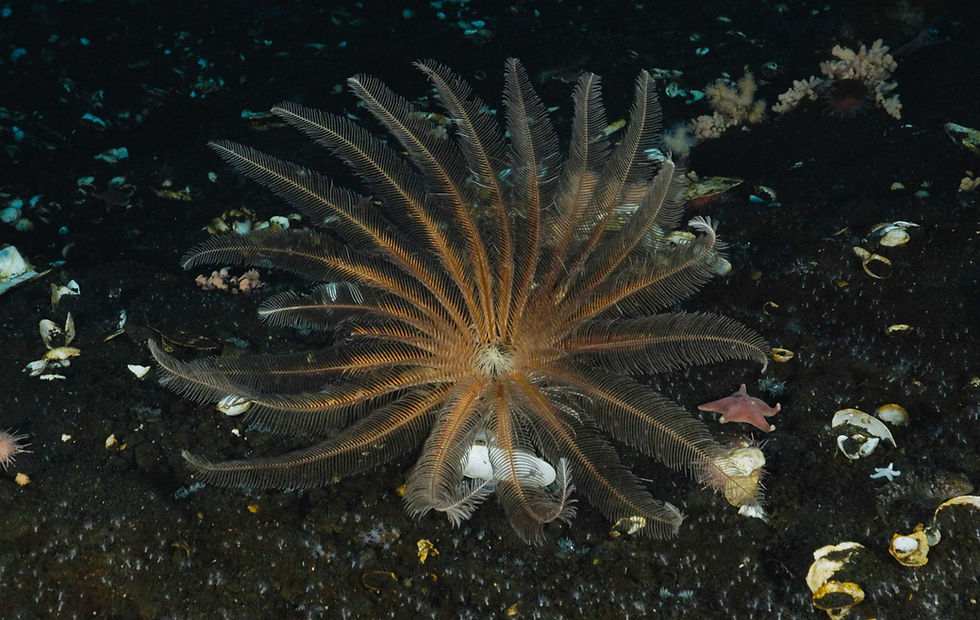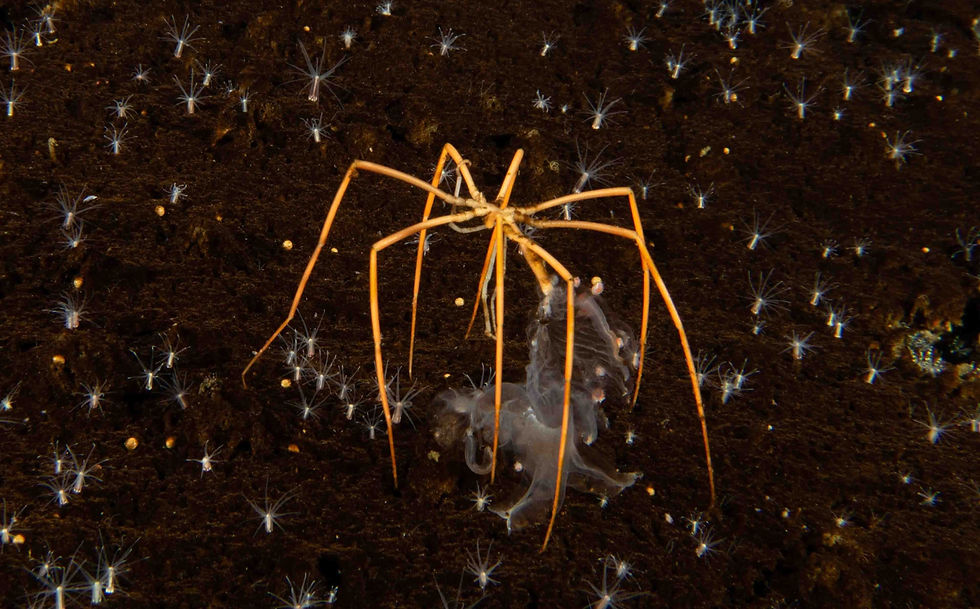Antarctic Marine Life - part 2
- Rowan McLachlan
- Nov 13, 2023
- 3 min read
At the moment, we are a team of five Antarctic divers here at McMurdo. To differentiate all of our SCUBA gear, we color-code each item using tape. As you may notice on my dive computer and my regulator hoses, I chose blue and white... representin' ma home #Scotland :)

Today, I have five more Antarctic critters to introduce to you! These were all seen while diving at the site known as Turtle Rock. This is perhaps my favourite dive site.
There is very little snow on top of the sea ice here and therefore this site is bright! We don't even need to carry a flashlight which is great.

The bathymetry at Turtle Rock is really diverse and the seafloor is just covered with life! How many species can you count in the photo below? P.S. I gave up trying!

And now, introducing the locals:
1) Giant Antarctic Isopod Glyptonotus antarcticus

The giant Antarctic isopod is found throughout Antarctica and lives at depths ranging from the shallow intertidal down to 790 meters. It can grow up to 20 cm long and can weigh up to 70g and can live between 5 and 7 years. Glyptonotus antarcticus is an omnivore and eats what it finds, including brittle seastars, gastropod molluscs, other isopods (including small ones of its own species... gulp... cannibalism), sea urchins, krill, and polychaete worms (including Flabegraviera mundata who we met in the previous blog). Its large mouthpieces are able to crunch through hard-shelled animals. Its role as a predator and scavenger in Antarctic ecosystems is akin to that of crabs and lobsters in temperate locations. It is preyed upon by fish such as Tremotomous bernachhi (who we also met in the previous blog) and octopus.
2) Ascidian Cnemidocarpa verrucosa (left, brown), and 3) Anemone Urticinopsis antarctica (right, pink)

Ascidians are also known as tunicates or sea squirts. This animal is found throughout Antarctica from depths of 2 to 5845 m. The body covering (known as the test) is acellular and is secreted by the tissue. It is composed of a substance known as tunicin: a substance akin to cellulose, and the only cellulose-like substance to occur in the animal kingdom. Cnemidocarpa verrucosa lives at least 4-years and can grow up to 20cm in diameter. You will notice it has two siphon tubes poking out the top. Water passes in one and out the other, and by doing so it filters the seawater feeding on diatoms, nanoplankton, bacteria, and detritus. This species is the largest ascidian in the Antarctic ocean.
The anemone, Urticinopsis antarctica, is found throughout Antarctica from 6 to 223+ meters depth. It grows up to 15cm high and 11cm in diameter. It has between 120 and 800 tentacles! It feeds predominantly on sea stars, sea urchins, and jellyfish (as shown in the photo below). This predator is the reason that the urchin Sterechinus (who we met the previous blog) camouflages itself with debris like clam shells!

4) Scale worm Eulagisca gigantea

This might be the coolest animal I found this year! I was just blown away with how big this animal was! This GIANT worm has been observed in Antarctica at depths between 30 to 920 meters. It grows up to 22 cm long and 10cm wide! The eversible proboscis mouthpart bears a pair of extra large jaws and is about a quarter of the length of the whole worm! Translation: I wouldn't want to pick a fight with this critter!
5) Crinoid Promachocrinus kerguelensis

This crinoid is found throughout Antarctica from 10 to 2100 meters depth! It has 20 arms, each of which is edged with feathery pinnules which contain sensory and reproductive organs.

Promachocrinus uses its arms to trap drifting plankton. The arms have grooves down the middle along which trapped food particles travel towards the upwards-facing mouth. It changes its feeding posture/shape depending on the ocean currents to maximize the amount of food it captures! Underneath the arms, it has legs (cirri) which it uses to walk along the seafloor and cling to objects. I saw this giant crinoid on the same dive as the scale worm - making this easily my best dive in Antarctica this season! I love finding new critters!



Comments